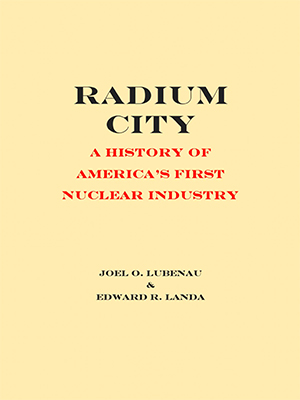News Archive
 Joel O. Lubenau has written, along with Edward R. Landa, Radium City, A History of America's First Nuclear Industry. Published in 2019 by the Senator John Heinz History Center, the 186-page book includes a foreword by J. Samuel Walker, 11 chapters, 33 pages of notes, a 14-page bibliography, and 149 illustrations, both black and white and color, including many historical photographs.
Joel O. Lubenau has written, along with Edward R. Landa, Radium City, A History of America's First Nuclear Industry. Published in 2019 by the Senator John Heinz History Center, the 186-page book includes a foreword by J. Samuel Walker, 11 chapters, 33 pages of notes, a 14-page bibliography, and 149 illustrations, both black and white and color, including many historical photographs.
In 1913, Standard Chemical Company (SCC) of Pittsburgh, Pennsylvania, became the first American company to commercially produce radium, and by 1921 SCC produced more radium than any other company in the world. That year, Marie Curie received a gift at the White House of one gram of radium, costing $100,000, from the Women of America. SCC produced the gram and, afterwards, Curie visited the company's plants. This book is an account of how two brothers, James J. and Joseph M. Flannery, undertakers-turned-industrialists, twice succeeded in making once rare metals, vanadium and radium, in commercially available quantities. Vanadium steel made Ford's Model T possible and the vanadium enterprise provided the business model for producing and marketing radium. SCC played a major role in promoting the medical use of radium in America. Medical radium paved the way for today's use of radioactive material in medicine, an important legacy. But there were other legacies—the effects of exposure to radium on worker health and environmental consequences of mining, production, and refining of radium. The government had a prominent role even dating to the earliest days of the company when it threatened to compete with SCC. And yes, Pittsburgh was—briefly—nicknamed "Radium City."
Radium City, A History of America's First Nuclear Industry is available for download at no cost on the Heinz History Center website.




